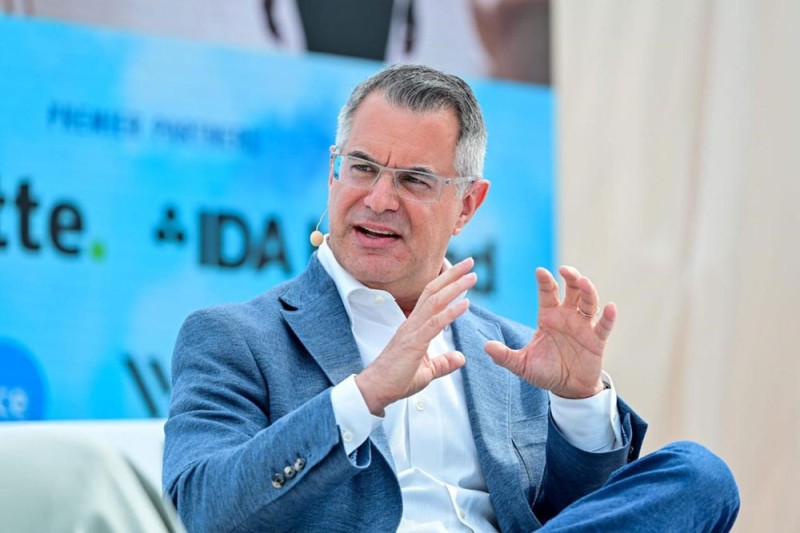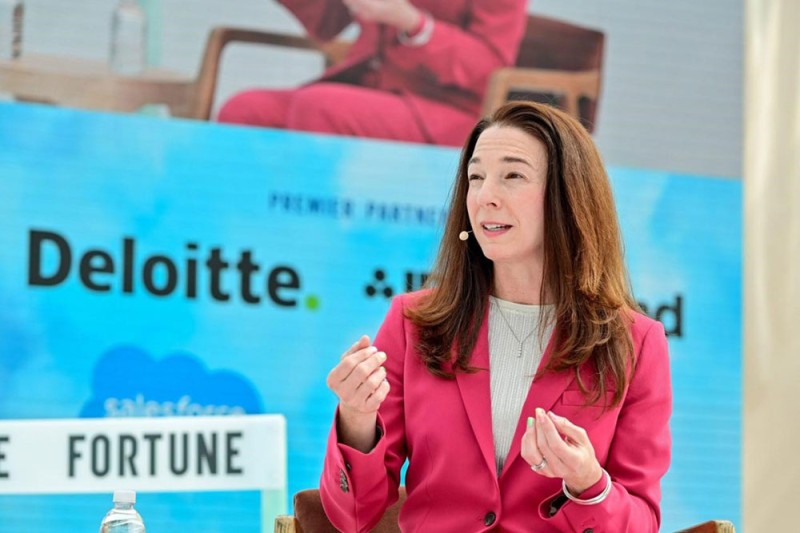
传统上,一家建筑设计公司可能需耗时数月为潜在客户准备一份概念方案。但这种方式往往会面临一个问题,那就是成本高昂,且设计师需根据客户要求不断修改方案,这一过程可能要耗时数日甚至数周。
AI技术将改变这一现状。设计公司能应用AI快速生成草图和效果图,建筑师则在AI生成的图像和视频基础上丰富其方案内容。
全球最大的建筑设计公司Gensler如今开始用AI“讲故事”了。他们通过视频为拟建项目的设计方案编剧情,让客户像看电影一样理解设计创意,还能亲自参与设计过程。
Gensler联席CEO乔丹·戈德斯坦上周在犹他州帕克城举办的《财富》科技头脑风暴大会上表示:“当你做新方案推介或初见客户时,如果看到有人因为被故事打动而眼眶湿润,你就知道这招确实奏效了。”
戈德斯坦现场展示了一段由AI生成的视频,片中有两个角色——一个客户和一个新员工——正在一栋建筑中参观。他解释称,这段视频就是用讲故事的方式,让客户直观感受这座建筑想传递的理念与精神。
他补充道:“想象一下,不必再去搭建实体原型或样板间,就能带客户体验整体设计风格,并让客户在投入巨资建造实体建筑前决定设计方向。这也改变了建筑师和设计师在整个流程中的角色定位。我们更像是交响乐团的指挥家:统筹设计、品牌和技术,而讲故事始终是核心基石。”

万豪国际全球设计高级副总裁克里斯滕·康瑞解释道,“设计语言并不是人们日常使用的表达方式。”AI能近乎即时呈现修改效果,让整个设计流程更加“同步化”。
她表示,在传统建筑设计流程中,“团队会闭门解读客户需求,制作方案,再根据客户反馈调整方案。”
康瑞说,AI的出现意味着“我们能更快、更好、更智能地完成工作,实现多方共赢。”
保持人类参与
建筑师们正在尝试探索AI辅助建筑设计的方式。像中国初创企业小库科技(Xkool Technologies)提供的工具,可以将一张素描图快速转化为摩天大楼的多维渲染效果图。一些建筑师甚至认为,AI或许可承担更多创意构思工作,而人类工匠则负责将设计转化为现实。
不过,戈德斯坦在大会上强调,设计过程离不开人类和现实世界。
他表示:“亲身走进空间、感知材质、触摸墙面、体验室内光影环境,这种触觉体验无可替代。”(*)
译者:刘进龙
审校:汪皓
传统上,一家建筑设计公司可能需耗时数月为潜在客户准备一份概念方案。但这种方式往往会面临一个问题,那就是成本高昂,且设计师需根据客户要求不断修改方案,这一过程可能要耗时数日甚至数周。
AI技术将改变这一现状。设计公司能应用AI快速生成草图和效果图,建筑师则在AI生成的图像和视频基础上丰富其方案内容。
全球最大的建筑设计公司Gensler如今开始用AI“讲故事”了。他们通过视频为拟建项目的设计方案编剧情,让客户像看电影一样理解设计创意,还能亲自参与设计过程。
Gensler联席CEO乔丹·戈德斯坦上周在犹他州帕克城举办的《财富》科技头脑风暴大会上表示:“当你做新方案推介或初见客户时,如果看到有人因为被故事打动而眼眶湿润,你就知道这招确实奏效了。”
戈德斯坦现场展示了一段由AI生成的视频,片中有两个角色——一个客户和一个新员工——正在一栋建筑中参观。他解释称,这段视频就是用讲故事的方式,让客户直观感受这座建筑想传递的理念与精神。
他补充道:“想象一下,不必再去搭建实体原型或样板间,就能带客户体验整体设计风格,并让客户在投入巨资建造实体建筑前决定设计方向。这也改变了建筑师和设计师在整个流程中的角色定位。我们更像是交响乐团的指挥家:统筹设计、品牌和技术,而讲故事始终是核心基石。”
万豪国际全球设计高级副总裁克里斯滕·康瑞解释道,“设计语言并不是人们日常使用的表达方式。”AI能近乎即时呈现修改效果,让整个设计流程更加“同步化”。
她表示,在传统建筑设计流程中,“团队会闭门解读客户需求,制作方案,再根据客户反馈调整方案。”
康瑞说,AI的出现意味着“我们能更快、更好、更智能地完成工作,实现多方共赢。”
保持人类参与
建筑师们正在尝试探索AI辅助建筑设计的方式。像中国初创企业小库科技(Xkool Technologies)提供的工具,可以将一张素描图快速转化为摩天大楼的多维渲染效果图。一些建筑师甚至认为,AI或许可承担更多创意构思工作,而人类工匠则负责将设计转化为现实。
不过,戈德斯坦在大会上强调,设计过程离不开人类和现实世界。
他表示:“亲身走进空间、感知材质、触摸墙面、体验室内光影环境,这种触觉体验无可替代。”(*)
译者:刘进龙
审校:汪皓
Traditionally, an architecture firm might spend months putting together a concept document for possible clients. The problem: it’s expensive, and requested changes might take days or weeks to put together as designers go back to the drawing board.
AI is set to change that by letting design firms create sketches and renders much more quickly, allowing architects to enrich their pitches with AI-generated imagery and video.
Gensler, the world’s largest architecture firm, is now starting to tap AI for “storytelling,” using video to help shape a narrative around a proposed project—and bring clients into the creative process.
“You can tell it really works when you’re doing a new pitch or a first client meeting, and you see people in the crowd that have tears in their eyes because they’re connecting with the story,” Jordan Goldstein, co-CEO of Gensler, said last week at the Fortune Brainstorm Tech conference in Park City, Utah.
Goldstein demonstrated one such AI-generated video, which featured two characters—a client and a new employee—exploring a building. The purpose of the video, Goldstein explained, was to tell a story about the building and help convey an ethos and message to clients.
“Imagine, instead of having to go build a prototype physically or a model room, that you can take people on this journey and then make the decisions on what to tap left or tack right on before investing heavily in physical architecture,” he added. “It also changes the role of the architect and the designer in the process. It puts us more like conductors in the symphony: Orchestrating design, brand, technology, all with storytelling as a foundational aspect.”
“The language of design isn’t necessarily one that people are speaking every day,” Kristen Conry, senior vice president of global design for Marriott International, explained. AI, and the ability to show changes near-instantaneously, helps make the process more “synchronous.”
In a traditional architectural design process, “your team goes off behind closed doors, tries to interpret what I’ve said, and then you come back, and then I might give you feedback on something,” she said.
AI means “we can do it faster, better, smarter, which is a win for everyone,” she said.
Keeping humans involved
Architects are tentatively exploring how AI can help them design new buildings. Startups like China-based Xkool Technologies offer tools that can convert a quick pencil sketch into multiple renders of a proposed skyscraper. Some architects even think that AI programs might do more ideation, while letting human artisans do the work of transferring designs to the real world.
Still, Goldstein said at the conference that humans and the real world needed to stay involved in the design process.
“Nothing beats the tactile feeling of walking into a space, recognizing the materiality, and running your hands on the wall surface or appreciating the lighting environment in the room,” he said.

